Review: Sony Xperia Ion for AT&T
Jun 24, 2012, 8:30 AM by Eric M. Zeman
AT&T's latest LTE 4G smartphones comes from Sony Mobile. The Xperia Ion offers a great display and excellent camera, but stumbles through some other key features. Find out which they are in Phone Scoop's full review.
Form
Is It Your Type?
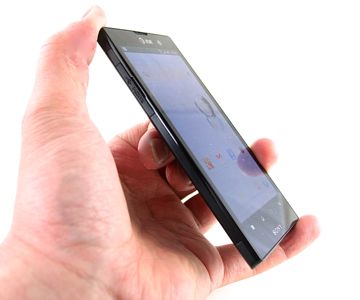
Sony's latest Android phone is the Ion for AT&T. It bears the important distinction of being the first U.S. phone to be branded "Sony" rather than Sony Ericsson. It's also Sony's first LTE 4G effort for the U.S. and offers a new content store from Sony. Has Sony finally assembled all the pieces it needs for the Ion to stand apart on the crowded shelves in AT&T stores? Nearly.
Body
Sony Ericsson phones have maintained a certain stylistic flair over the years. One might call the design language quirky, colorful, or quixotic. I was hoping to see Sony Mobile take a different design approach now that it has ditched Ericsson's involvement and strike out on a bold new path. It hasn't. The Xperia Ion from Sony follows the same path set by the myriad other Xperia devices already in the market. In fact, it skips the coolest feature of the Xperia P and U (the see-through strip.)
The Ion has distinct corners on the front giving it a very rectangular appearance. The face has four hard edges where it meets the side surfaces of the Ion. The back of the Ion, in juxtaposition, is a curved surface that is made from several different materials. The glass, metal, plastic, and soft-touch surfaces are separated by horizontal and vertical lines that confuse the overall look rather than bring it any sort of unity.
The Ion fits comfortably in your hand thanks to the curved back, though. It's not too weighty, and I was able to balance the phone in one hand easily without stretching my thumb too far across the display. Despite the brushed aluminum back plate, there's enough plastic on the Ion to detract from the overall quality of the device. Fewer lines and surfaces with tighter construction would be better. As it is, the Ion is slightly creaky.
It's thin enough to fit in most pockets, but due to the trapezoidal shape of the phone, it's more comfortable if you put it in with the screen against your leg.
The front surface consists of little but the display. At the top, the user-facing camera is plainly visible, and the notification light stands out nicely from the black. There are four capacitive buttons for standard Android 2.3 functions.
They are some seriously cruddy buttons. Each button is about 5mm below the bottom edge of the display. The buttons are underlined with a glowing strip of dashes. When the buttons have been activated, both the symbol and dash light up. The problem is, pressing the symbol — the area on the Ion's surface where the button is painted — doesn't actually work. I found that I had to press the area in between the button and the bottom edge of the display to get them to work properly. This is a real pain in the butt when using the phone in the dark, because your instinct is to press the button, not the area above the button. It's either misaligned, or just an amazingly poor design. Other reviewers noticed a similar problem.
The microUSB and microHDMI ports are on the left edge of the phone and are protected by a hatch. I found the hatch to be finicky and annoying. The camera, volume, and power keys are all on the right edge of the Ion. All three have a cheap feel to them and none provide good travel and feedback. The camera button, which is nice to have, is a two-stage button. I didn't think the stages were defined well enough. The volume toggle barely has any travel and feedback, and the power/lock button is mushy at best. There's a 3.5mm headset jack on the top.
The Ion's battery cannot be removed, but the small plastic areas at the top and bottom of the Ion's back surface can be peeled off - with difficulty - if you really want to remove them. The bottom one only reveals a sticker with the FCC ID and other data on it. The top one provides access to the SIM card slot and microSD card slot.
From a distance, the Xperia Ion looks good. In the hand, and in daily use, it could be a lot better.
The Three S's
Screen
The Ion's screen uses what Sony markets as a Reality Display, with the same Bravia technology that's found in its television sets. It offers 1280 x 720 pixels, making it an HD display. I found the colors to be amazing, the blacks like the darkest night, and the overall appearance to be pleasing. Icons, text, and such are razor sharp and visibility both indoors and out was very good.
Signal
The Ion works on AT&T's HSPA+ and LTE networks. Throughout my testing, it always remained connected to the network, even in poor signal areas. I had no trouble making or receiving phone calls with the Ion, and it never dropped a call. The signal indicator says "4G" when HSPA+ is available and "LTE" when LTE is available. The Ion transitioned between the two networks smoothly. Data speeds were consistent no matter what connection type was available, though they weren't the fastest I've experiened. The Ion that I reviewed had no network trouble at all.
Sound
The quality of voice calls was very good. I thought voices sounded warm and present, and those to whom I was speaking reported the same of my voice. I didn't experience any interference or other problems. The earpiece isn't loud enough, though. It's darned near impossible to hear calls in a semi-noisy coffee shop or restaurant. The same goes for the speakerphone. Though the quality is good, the speakerphone simply isn't loud enough. I even enabled the Ion's xLOUD feature, which helps boost earpiece performance. It had no real discernible effect. Ringers and alert tones were better than the speakerphone, but even set all the way up they were easy to miss in loud settings. The vibrate alert was strong.
Battery
Almost all 4G LTE smartphones to date have poor battery life, and the Ion is no exception. When tested under LTE coverage, the battery would drain in mere hours. We're talking fewer than 6 hours from a full charge. You absolutely cannot go a full day on a single charge if using AT&T's LTE network. There's no control in the Ion's settings to disable the 4G radio, so you'll need to keep it plugged in. The Ion's batter manages to do a little bit better under 3G-only coverage. I coaxed it through an entire day of battery life from it, but barely. The battery was begging for mercy by 10PM on most days. It is important to note that the Ion's battery is sealed inside and not accessible to the user. That means no spare batteries. Not only does the Ion need to be charged every night, you need to have a cord or charger handy.
Basics
Menus
The Ion ships with Android 2.3 Gingerbread but will be updated to Android 4.0 Ice Cream Sandwich shortly, according to Sony. The Ion has a user interface skin from Sony that offers its own spin on social networking and other functions, but leaves the core experience fairly close to stock Android.
Perhaps the most useful feature is the ability to customize lock screen notifications. For example, you can choose to see all notifications from the lock screen, or just emails and missed calls, or just text messages and Facebook messages. You can pick and choose from six different notification types, as well as turn them all off.
The lock screen stops short of being awesome, however, because there aren't any lock screen shortcuts. At least you can alter the sound profile from on to silent and vice versa from the lock screen. But still, hugely customizable notifications and no lock screen shortcuts? *Shakes My Head*
Five home screen panels offer plenty of room for users to customize their device with apps, shortcuts, and widgets. The main app menu is organized in a grid that you swipe left and right to access different panels. Thankfully, the order of the apps can be completely customized by the owner, as well as sorted alphabetically and by frequency. There's also a helpful tool in the settings menu (different from the native application management function) that lets you hide certain apps from the main menu, such as those installed by AT&T.
One thing I liked: Sony added home screen folders to the Ion, even though it runs Android 2.3. Just as on an Android 4.0 (ICS) device, you can drag-and-drop home screen icons onto one another, and they'll automatically create a new folder on the home screen.
In terms of performance, I didn't notice any problems. Screen transitions on the home panels were smooth and free of stutters. Apps opened quickly, and the system didn't crash on me. The only issue I saw were several widgets that were slow to update content.
Calls/Contacts
The phone and address book applications of the Ion barely differ from those of other Android 2.3 devices. The phone and contact app are one, and share a tabbed appearance that offers access to the phone, recent calls, the full contact list, and favorites thanks to software buttons lining the bottom of the app. Basic calling features include easy access to the mute button, speakerphone, number pad, and contacts app.
The contact database is familiar territory to anyone who's used an Android device before. Power-user shortcuts, such as long-presses and short swipes, call up extra options.
Messaging
In what I am sure is a total surprise to everyone, the Ion includes Gmail, email, SMS/MMS, IM, GTalk, Google+, Google+ Messenger and other messaging applications. The stock Android apps are just as you expect them to be. The official Android Facebook application is pre-installed, but the official Twitter app isn't.
What sets the Ion apart from other Android devices is the TimeScape software conjured up by Sony. TimeScape has been a part of Sony's Android devices from day one, and it has grown up a bit over the course of the last few years.
First, there are three different TimeScape widgets. The first consumes an entire home screen panel and lets you sort through Facebook and Twitter updates that appear in the form of a floating stack of cards. Flick up and down to shuffle through the deck. It's a neat visual presentation, but I found it didn't want to update very often.
There are two, smaller widgets that let you target smaller actions. The first is a little text bar for you to post your own status. This bar has a cool button that lets you easily pick which social network you want to update, without leaving the home screen. The second is a bit larger, and includes the avatars of 8 contacts and quick access to their most recent updates. For example, my friend Lynn has 12 status updates, so a little "12" appears above her picture. If I press her picture, I am taken to those updates on a single card, even if the updates are to multiple social networks.
Lastly, there's a full TimeScape application. It uses the floating stack of cards trick and separates out all the social networks. Swipe from side-to-side to see just your Twitter stream, or just your Facebook stream, etc. It also works with LinkedIn and FourSquare.
Extras
Media
The Ion is packed with media options. First, Sony reskinned the stock Android music and video player apps. They both offer basic playback functionality of music and videos, but look nicer than the stock apps. The stock, Google-run Google Play Music and Google Play Movies content stores are both on board for your music and movie purchasing/renting needs. These are the same apps found on most new Android devices.
Then there's Sony Music Unlimited and Sony Videos Unlimited. These are content services run by the Sony Entertainment Network. Oddly, you can't create an account from the Ion. You have to use the Sony web site (or use an existing PlayStation Network account) to gain access to the apps. Once you do, $10 per month buys the user unlimited music streaming each month via Music Unlimited. The service can cache playlists on the device for offline playback and offers tons more features. The Movies Unlimited service offers movie rentals. Pricing for the rentals has yet to be determined. These services have an incredible wealth of content, and are not limited to Sony's content. The Movies Unlimited offering, for example, will have access to new rentals before Netflix, according to Sony.
Beyond these options, the Ion includes AT&T Live TV (a for-pay streaming video service) and an FM radio. Of course, there's also the entire Google Play Store to comb through, where thousands of media apps are available.
Camera
Camera
The Ion's 12-megapixel camera is one of the device's best features. The dedicated camera button and quick-launch mode really set the tone for ultra-fast performance.
Press and hold the camera button at any time and the camera will launch and quickly fire off a shot. That's really neat. When you're in a hurry, that quick shot mode oftens mean the difference between getting the shot you want and not getting it at all.
The Ion's camera can be configured in many ways, and offers all the shooting modes and controls we've come to know and love from the best phones. Options include: 3D sweep panorama, multi-angle panorama, sweep panorama, flash control, geo-tagging, smile detection, and so on.
The left side of the screen is where the in-depth controls are. The cool thing is that you can customize which controls are in this tool bar. On the right you have the software toggle for the video camera, the software shutter button, and access to the picture gallery.
The speed of the Ion's camera alone is enough to make me like it. Throw in tons of controls and you have a happy Phonescooper.
Gallery
As awesome as the camera app is, the gallery stinks in comparison. It's the stock Android 2.3 Gingerbread gallery. It feels like Sony didn't even bother developing a nice gallery app for the Ion because it knows the Ion will have all new software once it is updated to Ice Cream Sandwich.
Be that as it may, the gallery offers the same old stack of images floating in mid air. The stacks are folders of images based on date and/or however you choose to designate them. The entire gallery can also be viewed in a timeline grid.
Sharing photos via social networks or messaging apps is easy, but you won't be able to edit them at all. Images can be rotated and cropped and that's it. There's no third-party editing app, either. That's pretty weak, Sony.
Pictures/Video
Pictures
I was very pleased with the images I captured with the Ion. The 12-megapixel sensor really does a good job. Exposure was spot on, even in difficult environments that had both dark and light regions. Focus was razor sharp. White balance was accurate. In total, images looked really, really good. The images were so good that few (if any) needed to be edited or altered. (This almost excuses Sony for the lack of true editing software, but not quite.)
Video
The Ion captures video at a maximum resolution of 1080p HD. I shot several video samples at both 1080p and 720p HD. All the samples looked very, very good. As with the camera, video was in focus, accurately exposed, and showed proper colors. Fast action looked great, and I didn't notice any of the overly-shaky behavior that's present in 1080p video from some other phones.
The bottom line for both the camera and video camera: You're going to want to share these images and video with everyone you know.
Speaking of sharing, the Ion makes great use of the microHDMI port. You can connect it directly to another HDMI device - such as a TV - and watch your 1080p videos on the big screen with ease. It worked flawlessly. When connected, the Ion goes into a "connected mode" with a pared-down user interface. It's really easy to use for not only sharing images and video on your TV, but for browsing the web and other tasks by mirroring the phone's display on the TV. Cool stuff.
Browse/Customize
Browser
The Ion comes with the stock Android 2.3 browser on board. Paired with AT&T's HSPA+/LTE networks, I felt it browsed a bit on the slow side. Web sites often took 10 to 30 seconds to load, rather than 5 to 8. With the fast wireless network and fast processors, there really shouldn't be a performance issue with the browser, but it's notably slower than other similarly equipped devices I have on hand. The browser software itself is fine, though I prefer other browsers myself.
Separately, app downloads weren't the speediest, either. Other phones downloaded and updated similar app updates faster than the Ion.
Customize
The Ion offers plenty in the way of user customization. As noted, there are five home screen panels to serve as your digital tapestry. Sony's software provides an extra batch of widgets for the home screens and I particularly like the way you can tweak the lock screen notifications. Beyond these tools, altering wallpapers, themes, ringtones, and all of that stuff is a breeze.
Extras
Apps
AT&T didn't go overboard with pre-installed bloatware on the Ion. Sure, there are a handful of AT&T-branded apps, such as Navigator, Live TV, and MyAccount, but many of them can be deleted. The more interesting apps are the ones included by Sony, such as Music Unlimited and TimeScape. As always the Google Play Store is where you can find anything else you might need.
Bluetooth
The Ion supports a typical set of Bluetooth profiles. I was able to use the Ion with my car's Bluetooth system easily. Phone calls that I conducted through my car (and through regular Bluetooth headsets) were clear and free of interference, but suffered severely from a lack of volume. It was hard to hear conversations. The stereo Bluetooth performance was quite good, and music sounded excellent when channeled through a pair of stereo Bluetooth headphones I have.
Clock
As with all Android phones, pressing the lock button wakes up the display. The lock screen offers a sizable digital clock, but it's darned near impossible to see thanks to the hair-thin font used. If you have a dark lock screen, it's visible. If you pick a bright or colorful lock screen wallpaper, you'll never be able to read the time — especially outside.
GPS
Google Maps and AT&T Navigator make the Ion a solid go-to device for getting around town. The Ion's GPS powers always pegged my location accurately to within about 10 feet, and only took a few seconds. The phone has enough processor and network oomph under the hood that the Ion was able to deliver real-time turn-by-turn navigation without falling behind.
Wrap-Up
Sony got the Ion about 60% right. Strengths include the excellent display, solid call quality, neat social networking software, bountiful media options, and an outstanding camera. For potential users who are heavily invested in Sony's online gaming and content networks, the music and video services offer a lot of appeal.
The weaknesses, though, are hard to ignore. The poor battery life alone is enough to make the Ion a dubious purchase. Toss in consistently slow data performance and the finicky hardware and it makes the Ion tough to love.
Perhaps shut-ins who rarely go outside (or at least are never far away from a power outlet and Wi-Fi) won't mind the poor battery life. The awesome camera is a major draw, but again, only if you can see past the device's other faults.
In the end, I'd only recommend the Ion to committed Sony-philes and photographers who want a camera with a phone attached, and not a phone with a camera attached.

Comments
What happened with Philip Berne?
What happened to the other guy?
Riot_Act said:
In the last few months all the reviews I've read have been written by Eric.
What happened to the other guy?
Things you don't say when the current guy is doing a fine job.
No LTE on/off switch
And it's something that's possible! The iPad 4G has an LTE on/off switch, and I love that.
Why aren't phone manufacturers doing that? Do you think any phones do? Are you aware of any that do for AT&T?
(continues)
ics update?
exibitsman said:
☹️ I would consider buying this device if it is going to get ICS update.99$ great price if I wait 4 to 6 weeks it will 49:99$.
Gizmodo ripped Sony for putting Gingerbread on this handset. I've gott...
(continues)


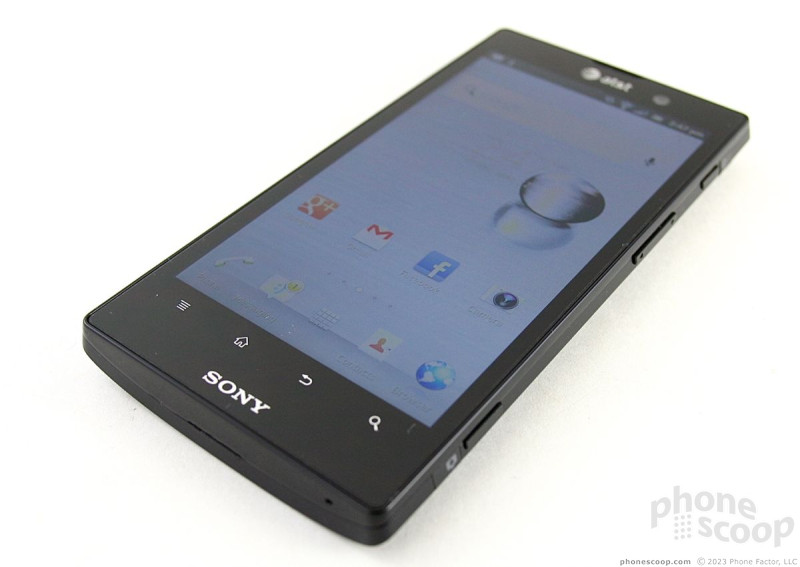

























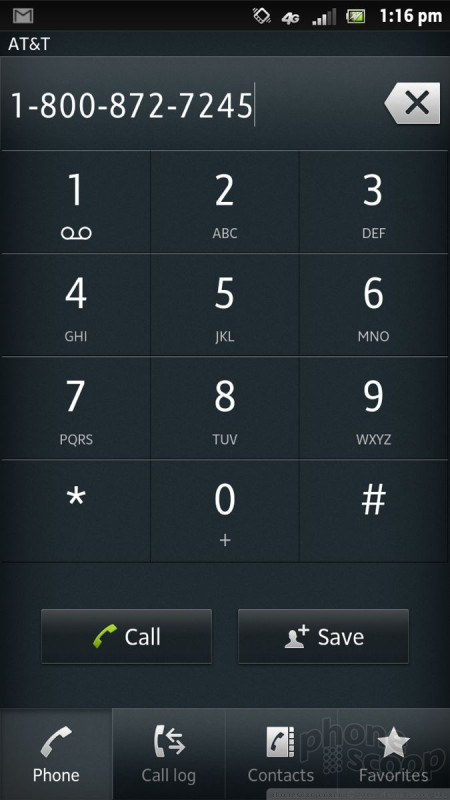






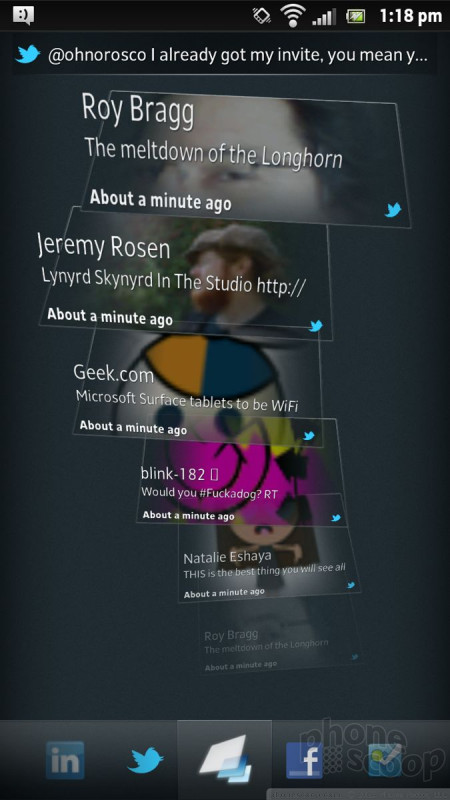





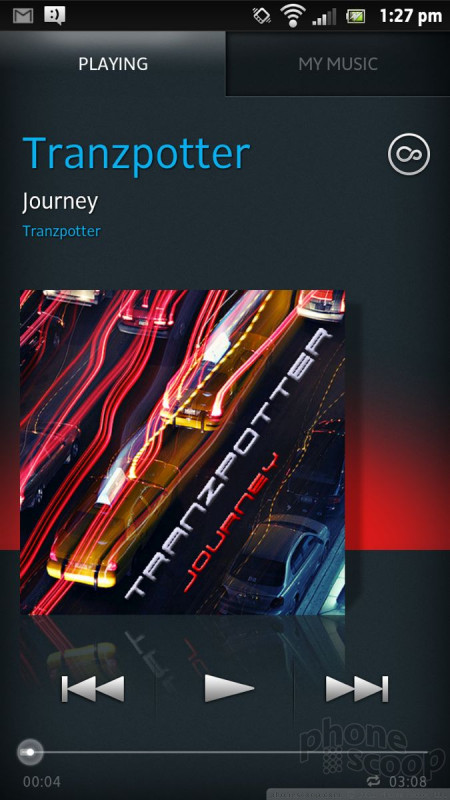



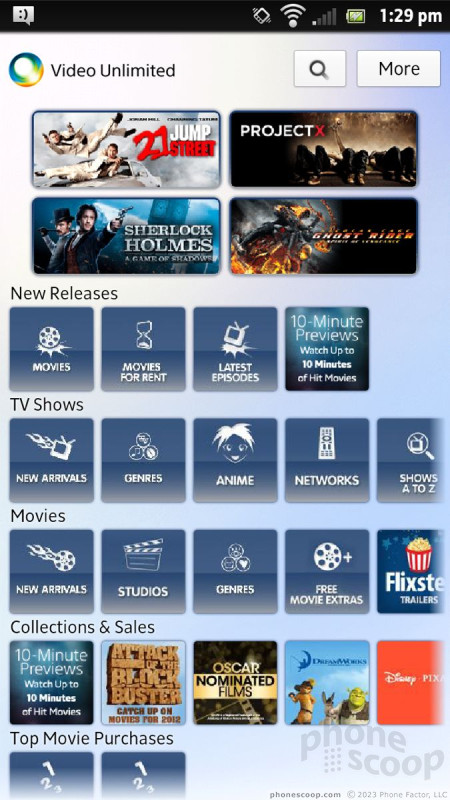



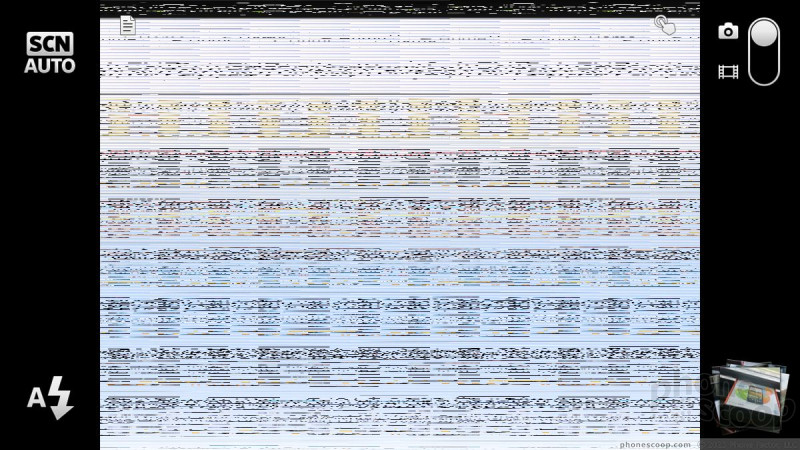



















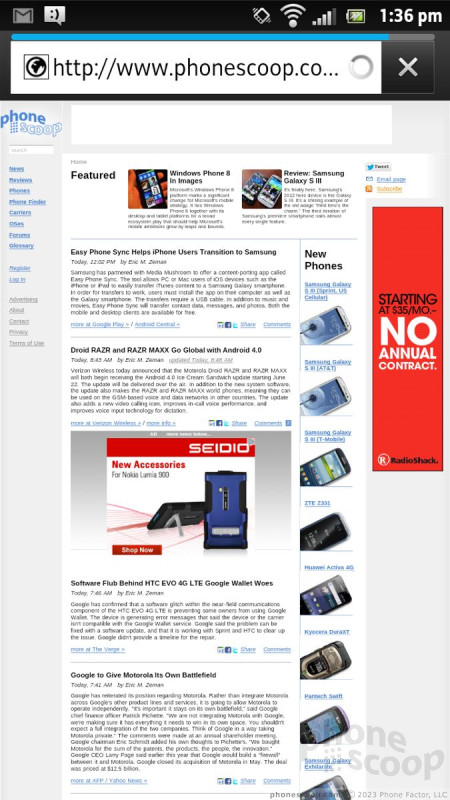



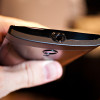 Hands-On: Sony Xperia Ion
Hands-On: Sony Xperia Ion
 Sony Xperia ion
Sony Xperia ion









